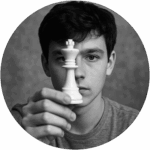There are two kinds of tournament directors in this world.
The first kind believes in total automation. Set the pairing rules, enter the scores, let the software do its thing. If it pairs Auntie Pat against her grandson in round five of the village rapidplay, well… that’s the algorithm’s fault. Nothing to be done.
The second kind?
They know that chess isn’t clean. Not at the grassroots level. Not when half your players are under 10, someone’s surname is spelled differently every week, and your club secretary insists on playing White in round 1 because it’s his birthday.
That’s where Swiss Perfect earns its stripes.
You’re Allowed to Break the Rules (If You Understand Them)
Unlike many modern pairing programs, Swiss Perfect doesn’t treat the system as sacred. It assumes you’re a human being who sometimes needs to make human decisions.
- You want to force a specific pairing in round 3?
- You need to give a manual bye to someone whose bus didn’t show up?
- You want to split a large group into two separate groups because half of them have COVID and you’re doing hybrid pairings via Zoom?
Swiss Perfect won’t argue.
It’ll just let you do it.
All changes are tracked, logged, and highlighted — but you’re never locked out of the system you’re running. Because it trusts that you’re not a monkey bashing the keyboard. You’re a tournament director. You know why you’re making the call.
When I First Used the Manual Override Feature
I still remember the first time I used it.
County junior open, 1999. Pairings looked good on paper… until I noticed board 4 was two kids from the same school. Best friends. They’d played each other the week before. And the week before that. Their parents were watching, clearly hoping they wouldn’t get drawn together again.
So I overrode the pairing.
I slid one of them down and rebalanced the rest.
Swiss Perfect flagged it politely — said “Manual Adjustment” and let me continue. The algorithm didn’t fall apart. The world didn’t end. I printed the pairings. Everyone was happier. That’s when I realised: the software isn’t here to rule over me. It’s here to help me run a fair event.
But… Should You Use It Often? No.
Let me be clear: abusing manual override is a rookie mistake. It’s there for edge cases, emergencies, and human decency — not for rigging tournaments or favouring your mates.
If you’re adjusting 4 out of 6 pairings every round, something’s wrong. Either your tournament parameters are badly set, or you need to revisit the Swiss system itself. The manual override is a scalpel, not a sledgehammer.
Used correctly? It’s a lifesaver.
Used carelessly? It’s a lawsuit waiting to happen.
So What Happens Behind the Scenes?
When you override a pairing in Swiss Perfect:
- The system logs the change — it notes which player(s) were moved, what pairing was replaced, and the reason (if you choose to enter it).
- Tiebreaks and colour histories are recalculated based on the new structure.
- Any downstream impact (e.g. repeated opponents, float history, score group balance) is updated automatically — but flagged.
- You can reverse it at any time before finalising the round.
In short: it’s safe, controlled, and reversible.
It doesn’t let you ruin the tournament accidentally. But it does let you bend reality slightly when needed.
Why Other Software Doesn’t Trust You
Modern tools often block manual changes by default. And honestly? That’s fine if you’re running an event with live boards, engine analysis, and 300 spectators watching online.
But most of us are still printing pairings on A4 sheets taped to a noticeboard with duct tape. We’re running evening events in leisure centres with questionable Wi-Fi. We’re dealing with no-shows, last-minute dropouts, late entries, and a player called “John Smith” who might be three different people.
Swiss Perfect knows this.
That’s why it’s designed to be flexible, fast, and human-friendly.


